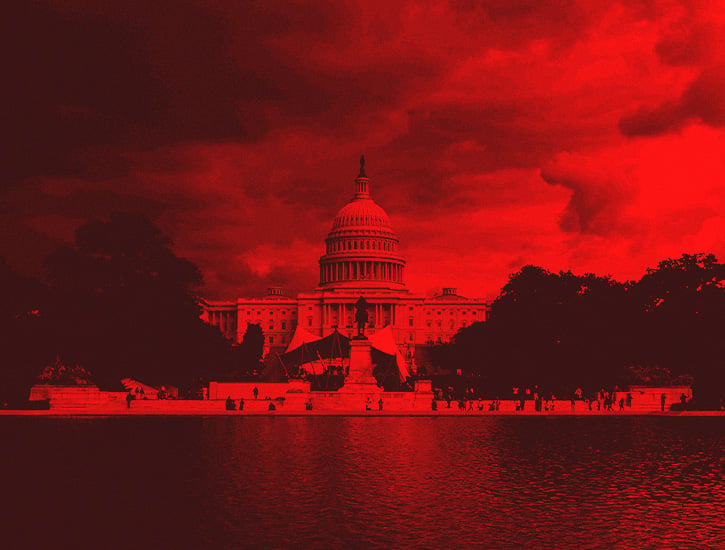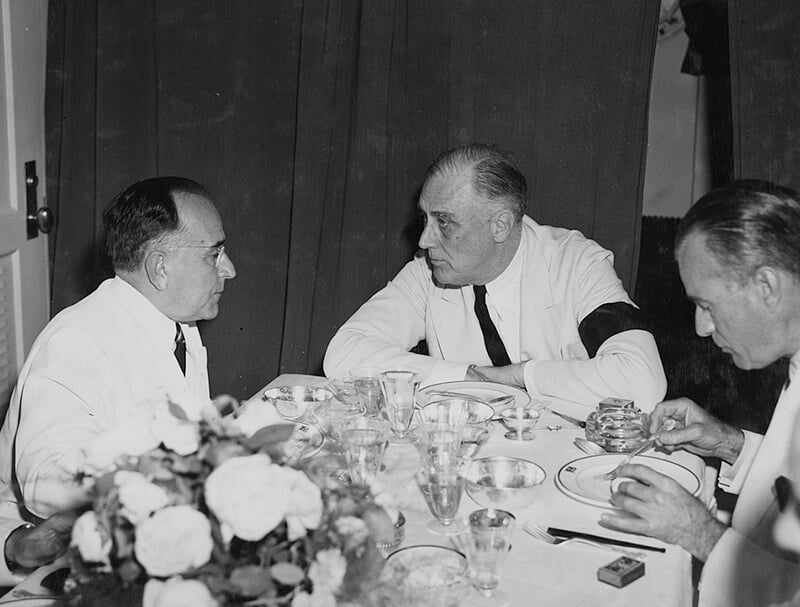
By JONATHAN VAN HARMELEN, Rafu Shimpo Contributor
Throughout its storied history, Little Tokyo has been a site of civil rights activism. At the center of Los Angeles, Little Tokyo has been the battleground for key initiatives that have combated racial discrimination at both the state and city levels.
In every generation, Japanese American activists have contributed to civil rights battles. At the beginning of the 20thcentury, Issei lawyer and activist Sei Fujii collaborated with USC classmate J. Marion Wright on challenging several discriminatory statutes in California. In 1928, Fujii and Wright argued before the U.S. Supreme Court in Jordan v. Tashiro.The case challenged a clause of the California Alien Land Law of 1911, which forbade the incorporation of a business by Japanese citizens – in this case, the creation of the Japanese Hospital of Los Angeles.
Throughout the early 20thcentury, hospitals in Los Angeles refused Japanese American patients. Following the influenza epidemic of 1918-1920, hundreds of Japanese Americans died due to a lack of facilities. In response, Dr. Kikuwo Tashiro, along with four other Issei physicians, purchased property in Boyle Heights with the intent of building a hospital in 1927. When California officials denied Tashiro a permit to incorporate the hospital, the doctors hired Wright and Fujii.

The Supreme Court ruled in favor of Tashiro, representing one of the first major successful challenges of the Alien Land Act. Twenty-five years later, in 1952, Fujii completed his long-sought goal of overturning the California Alien Land Act when the California Supreme Court struck down the law in Fujii v. California.
Along with Fujii, attorney Frank Chuman played a leading role in repealing California laws that discriminated against Japanese Americans. While a student at USC Law School, Chuman was incarcerated at Manzanar concentration camp in March 1942. While at Manzanar, Chuman witnessed the Manzanar uprising in December 1942, and the shooting of several inmates. As administrator during the riot where two died, he supervised the care of the surviving victims.
The event proved to be a turning point; Chuman angrily answered “no-no” to Questions 27 and 28 of the loyalty questionnaire of 1943, and only by the intervention of Manzanar’s director did Chuman avoid being sent to the Tule Lake Segregation Center. Later in 1943, Chuman secured clearance from the War Department to leave camp for the East Coast, and completed his legal studies at the University of Maryland Law School.

In 1945 Chuman returned to Los Angeles, where he joined the law firm of civil rights attorney Abraham Lincoln Wirin. While an associate of Wirin’s firm, Chuman became embroiled in several discrimination cases. He authored legal briefs for the JACL in the Supreme Court cases Oyama vs. California(1948), which halted enforcement of the California Alien Land Law, and Takahashi vs. California Fish and Game Commission(1948), which paved the way for Asian immigrants to become eligible for citizenship.
Perhaps his most important contribution to Los Angeles’ Japanese American community was his successful challenge in 1946 to South Pasadena’s enforcement of restrictive covenants, which barred minorities from renting property on publicly owned land. In the early 1960s Chuman, as national president of the JACL, supported civil rights legislation and also helped found the Japanese American Research Project at UCLA to preserve the historical legacy of Japanese Americans

In later years, Chuman went on to inspire several key legal advocates in the redress movement to challenge the convictions of Fred Korematsu, Minoru Yasui, and Gordon Hirabayashi by means of the seldom-used writ of error coram nobis. After a team of lawyers led by Dale Minami and Peter Irons petitioned to overturn the convictions, Chuman offered his support as an advisor to the team. Using evidence of official suppression and manipulation of evidence uncovered by activist/researcher Aiko Herzig-Yoshinaga, the legal team successfully overturned Hirabayashi and Korematsu’s convictions.
Outside of the Japanese American community, several Los Angeles-based African American activists aided Japanese Americans in their fight against discrimination. Attorney Hugh Macbeth became one of the principal challenges of Executive Order 9066. As uncovered by historian Greg Robinson, Macbeth worked with political leader Norman Thomas to expose the injustice of the official actions and joined the legal team that brought the habeas corpus petitions of Ernest Kinzo Wakayama and Toki Wakayama in order to challenge the Army’s “military necessity” argument for forced removal.

Macbeth also collaborated with the JACL on several cases, and co-authored amicus curiae briefs for the JACL in the cases of Regan vs. King(1943) and Korematsu vs. U.S. (1944). After the war, Macbeth hired attorney Chiyoko Sakamoto, the first Nisei woman attorney, as an associate in his firm.
Macbeth’s great-granddaughter, Janine Macbeth, points out that Hugh Sr.’s legacy lives on, as the Bruce family of Manhattan Beach that Macbeth represented finally received the land they lost 100 years ago.
Like Macbeth, Los Angeles congressman and state official Mervyn Dymally, a West Indian-born American of African and East Indian ancestry, was a key supporter of Japanese Americans. Throughout his career, Dymally cited the incarceration of Japanese Americans as an example of government policy driven by racism.
In 1982, Dymally introduced a bill in the House of Representatives calling for reparations for Japanese Americans, based on legislation drafted by the National Coalition for Redress and Reparations (NCRR). He testified on several occasions in support of redress before House and Senate hearings and helped steer the Congressional Black Caucus towards supporting redress bills.

Dymally also worked with Japanese American congressmen Norman Mineta and Robert Matsui on protesting derogatory statements made by the Japanese government about African Americans, resulting in an official apology.
Today, several Asian American organizations in Los Angeles continue to build multigroup coalitions and support civil rights initiatives. NCRR, founded in 1980, became a leading voice for redress within Los Angeles’ ethnic Japanese community. In the face of the waves of anti-Muslim sentiment that swept the U.S. after 9/11, NCRR reached out to Muslim American communities in solidarity. More recently, NCRR championed the defense of Sansei Iraq War dissenter Ehren Watada.
Now known as Nikkei for Civil Rights and Redress, the group, led by co-chairs Kathy Masaoka, Kay Ochi, and Richard Katsuda, remains active in connecting the memory of the wartime incarceration with other causes, such as reparations for African Americans.
The Manzanar Committee, founded in 1969 and headed by legendary activist Sue Kunitomi Embrey, organized annual pilgrimages and Days of Remembrance to draw attention to the wartime events, and led to the site’s creation as a National Historic Site. Among their leaders were Warren Furutani, a future California assemblyman, and Tak Yamamoto, a pioneering LGBT rights activist and the first openly gay president of a JACL chapter.
Now led by Sue Kunitomi Embrey’s son Bruce Embrey, the committee remains active in preserving the tradition of the Manzanar Pilgrimage and supports the teaching of the history of wartime incarceration.
Other groups, such as J-Town Action and Solidarity, are active in building coalitions that support the unhoused of Los Angeles, protesting aggressive sweeps conducted by the Los Angeles Police Department, and calling attention to the harmful consequences of gentrification.
Lastly, the national group Tsuru for Solidarity continues to use the memory of the wartime incarceration of Japanese Americans to challenge the buildup of ICE detention centers across the U.S. When Tsuru activists conducted a protest at Fort Sill of the segregation and imprisonment of migrant children, local leader Duncan Ryuken Williams led a Buddhist ceremony to mark the debut of a protest rally.
Images of Sei Fujii have been provided by the Little Tokyo Historical Society. Since 2009, the Little Tokyo Historical Society has spearheaded ongoing research that breathed life into Sei Fujii’s forgotten journey through forums, an award-winning short film and biography, historic designations, and more.
This project was supported in whole or in part by funding provided by the State of California, administered by the California State Library
 L.A. Japan Fair 2013 at OC Fairground
L.A. Japan Fair 2013 at OC Fairground
 A Fire on the Mountain
A Fire on the Mountain
 Ideology Ruled Her Camera
Ideology Ruled Her Camera
 Heteropessimism of the Intellect
Heteropessimism of the Intellect
 New Japanese Films at AFI Fest
New Japanese Films at AFI Fest
 Burn Down the House
Burn Down the House
 Stunning video reveals Jupiter's roiling auroras. See it now.
Stunning video reveals Jupiter's roiling auroras. See it now.
 nafany: "I can see that if Ax1Le has some struggles, sh1ro can fix it"
nafany: "I can see that if Ax1Le has some struggles, sh1ro can fix it"
 Deterrence Theory
Deterrence Theory
 Viva Lana Vegas!
Viva Lana Vegas!
 U.S. satellites reveal China's solar dominance
U.S. satellites reveal China's solar dominance
 Listen to the eerie sounds of Mars recorded by a NASA rover
Listen to the eerie sounds of Mars recorded by a NASA rover
 Overcome or overhaul: Cloud9's future
Overcome or overhaul: Cloud9's future
 NASA’s Mars rover proves these peculiar ridges have secrets to tell
NASA’s Mars rover proves these peculiar ridges have secrets to tell
 Essential Apps to Install on Windows and macOS
Essential Apps to Install on Windows and macOS
 Won’t You Be My Neighbor?
Won’t You Be My Neighbor?
 Venetian Ondo
Venetian Ondo
 Miss Thing
Miss Thing
'Yellowjackets' fact check: A chef weighs in on the wilderness feastAshamed of paying for Twitter? Twitter looking into letting Blue subscriber hide their checkmarkWordle today: Here's the answer, hints for March 24ChatGPT banned in Italy over data privacy concernsApple's iOS 17 may include some crowd'Quordle' today: See each 'Quordle' answer and hints for March 31'Yellowjackets' Season 2: Let's unpack that Greek feast fantasyApple's iOS 17 may include some crowdTwitter will take your blue checkmark on April 1 if you don’t payNothing Ear (2) vs. AirPods (3rd gen): Specs, features, and more Best earbuds deal: Score the Anker Soundcore Space A40 earbuds for just $49.99 Threads launches 'hidden words' feature to customize feed MotoGP livestream: Watch the 2024 Spanish Grand Prix for free What is a VPN? NYT's The Mini crossword answers for April 24 Wordle today: The answer and hints for April 23 NYT's The Mini crossword answers for April 26 How to cancel Netflix Tesla cuts FSD price, ditches Enhanced Autopilot 'Baby Reindeer' has seen a wave of armchair detectives. The creator called a halt.
0.1687s , 10453.3828125 kb
Copyright © 2025 Powered by 【mature wife sex video】The Civil Rights Leaders that Shaped Little Tokyo,Feature Flash